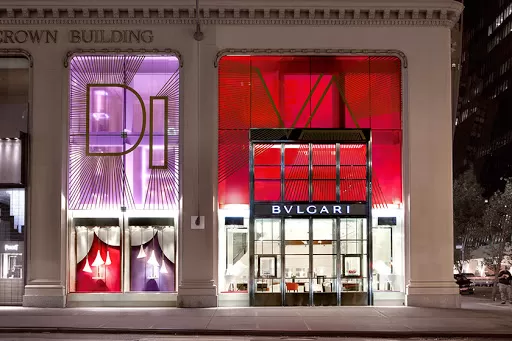If there’s one thing the last year taught us, it is the art of adaptability. Business owners need to stay informed on the latest ecommerce trends to ensure competitiveness as the ecommerce market continues to grow.
The question now is how to stay competitive whilst perfecting an ecommerce strategy – our tips cover the latest trends for the year ahead, from selling to shipping.
Multi-carrier and flexible shipping has become the new normal
Multiple shipping options are a sure-fire way to entice new customers and keep your current ones. Meet and exceed the expectations of your customers by offering them freedom of choice.
Even though delivery costs are still the most decisive factor for consumers, consumers want to decide where, when and how to receive a parcel with 76% of people saying flexibility with delivery options is important to them. Online retailers and carriers have to anticipate this.
Consumers not only want to choose which day a parcel will be delivered, but also what time, where and how it will be delivered. Ecommerce research even shows that customers also favour companies who give them the option of using their preferred carrier.
Due to the need for flexibility, same day and next day shipping are becoming more and more popular and even green delivery is on the rise. While already a popular shopping option, same-day shipping is set to become the new normal. Amazon’s Prime Air is at the forefront of the trend, as the merchant continues to promote 30-minute delivery with drone technology.
The only way to offer this degree of flexibility is to invest in a multi-carrier strategy. Following in the footsteps of the likes of Zalando, implementing a multi-carrier strategy offers an ideal solution to ensure smooth shipping for many forward thinking ecommerce companies.
By working with multiple carriers, you can offer consumers more choices in terms of speed and place of delivery, but also, for example, sustainability. On top of that, a multi-carrier strategy offers great advantages from a retailer perspective as well. You can spread volumes over multiple carriers which makes it easier to deal with disruptions and delays.
Carrier apps are on the rise
Consumer expectations are getting higher and higher when it comes to the delivery service of online orders. Consumers tend to be on top of their orders and as a result they seek immediate access to tracking updates. Good tracking information via email or text is the norm these days.
However, it doesn’t stop there. More and more consumers are turning to carrier apps to keep track of their orders. The UK are leading the way in this area: no less than 35% of consumers like to receive delivery updates via the carrier’s tracking app compared to a European average of 24%.
Apps have historically offered a far better user experience than desktop sites accessed by a mobile. Progressive Web Apps (PWA) are here to recapture the intuitive and seamless shopping experience typical of shopping apps – only on a web browser. They function in the same way as a mobile app, with the speed and optimised user experience to match.
Royal Mail launched its first tracking app back in in 2018. The app not only offers the possibility to track a parcel, but also to receive push notifications, change the delivery options or easily return a parcel. However, the possibilities of apps are endless.
At the Dutch carrier PostNL, for example, it is even possible to see which parcels are on their way on the basis of a verified home address, without the need for a tracking number. The ease that apps can offer fits in well with the demand for more flexibility and there is a good chance that apps will occupy an important position in the coming years.
The rise of ReCommerce
Returns are a pain for most retailers. Not only because they need to refund, but also because returns are very time consuming. Most retailers are not keen on moving rejected goods around, partly because of the logistics costs.
ReCommerce (reverse commerce) offers a great solution. It is the process of renting, reselling, or thrifting previously owned apparel through online or offline stores.
Lockdown has accelerated consumers’ interest in sustainable consumption habits. From apparel to refurbished tech goods, consumers are turning to second-hand buys to lessen the financial stresses of the pandemic and align with the greener outlook fuelled by its disruption of consumption as normal.
ReCommerce has seen renewed interest last year and harbours great potential for retailers to cut the costs of returns, by making returns profitable once again.
Green Delivery is a big deal
Along with a renewed interest in second-hand shopping, consumers are also intently aware of the impact of wider retail practices on the planet. 4 out of 10 consumers are afraid that the rise of online shopping is a problem for the environment.
However, despite consumers’ concerns about the impact of the e-commerce environment, a mere 13% are willing to pay for it. People want green shipping, but they also feel the financial responsibility belongs to retailers.
As an e-commerce brand, this means that you need to weigh-up the expense of green shipping with the competitive advantage it will give you in the eyes of your customers.
Zalando is leading the way, as the company continues to uphold its commitment to a net-zero carbon footprint in all deliveries and returns. As an e- commerce retailer, you can opt for green shipping for just a few pence with the platform.
As more brands may be reluctant to cover the extra cost of green shipping, you’ll stand out as a brand committed to green ideals by offering green shipping in your shipping options line-up.
Digitisation of brick & mortar stores has accelerated
With COVID-19, e-commerce sales have exploded, but brick-and-mortar stores still reign above e-commerce when talking sales. As a result, the digitisation of brick & mortar stores has rapidly evolved.
This year retailers will be bridging the gap and capitalise on sales by investing equally in both offline retail and e-commerce. Last year saw the interplay between offline and online stores in the form of interactive e-commerce kiosks and pop-up stores.
DTC brands have long been ahead of the curve in terms of tapping into the ideal customer experience and are set to further embrace omni-channel retailing in both offline and online spaces.
Many successful DTC brands, such as Casper and Rent the Runway, will continue to use the wealth of data they have on customer preferences to create a personalised in-store experience, such as: personalised discounts for in-store shoppers based on their digital shopping habits, or providing the ability to order online and collect in-store.
So if you’re looking to up your game and build an engaging customer strategy, then you’d do well to look into how you enable customers to move seamlessly between offline and online channels.
Despite huge advancements in recent years, bridging the gap between these two channels is still a challenge. Those retailers that can demonstrate how they can make offline and online work together to extend and enhance a customer’s experience, will strengthen their brand and the shopping experience.





